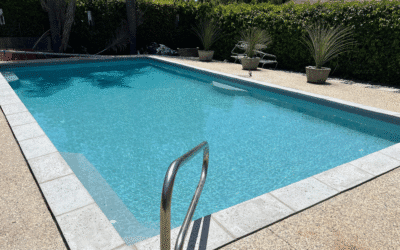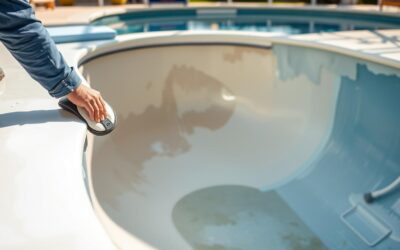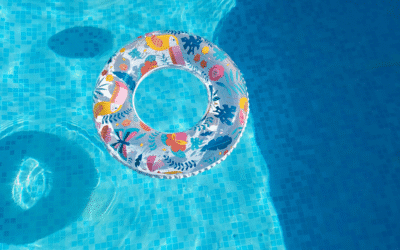If your pool surface feels rough on your feet or hands, it’s important to identify the cause and take the right steps to restore a smooth, comfortable finish.
Common Causes of a Rough Pool Surface
Etching from Chemical Imbalances
Pool water chemistry plays a major role in the condition of your pool’s surface. When pH or alkalinity levels are too low, the water becomes corrosive and starts to eat away at plaster or concrete finishes. Over time, this etching effect creates a rough, pitted texture that can be uncomfortable and may lead to further surface deterioration.
Solution: Regularly test and balance your pool water. Ideal pH levels should be between 7.4 and 7.6, and total alkalinity should stay between 80-120 ppm to prevent surface etching.
Calcium Buildup and Scaling
If your pool has high calcium hardness (above 400 ppm), calcium deposits can form on the surface, creating rough, chalky, or even sharp areas. These deposits build up over time, especially in pools with plaster or pebble finishes, making the surface uncomfortable to the touch.
Solution: Lower calcium levels by adjusting your water balance and using a pool-friendly sequestering agent to prevent scale buildup.
Worn-Out or Aging Plaster
Plaster pools typically last five to ten years before they begin to degrade. Over time, the surface becomes rough, brittle, and prone to chipping or cracking. This is especially common in older pools that have been patched or acid-washed multiple times, as the surface weakens with each treatment.
Solution: If plaster is wearing down, resurfacing with a more durable material like AQUA-GLASS™ fiberglass is the best long-term fix.
Pebble or Aggregate Finishes Wearing Down
Pebble and aggregate pool surfaces are known for their decorative appearance, but they can become rough over time, especially if improperly installed or not properly maintained. The small stones can loosen or erode, leaving the surface feeling abrasive and uncomfortable.
Solution: Resurfacing with fiberglass provides a smoother alternative while still offering durability and a long lifespan.
How AQUA-GLASS™ Resurfacing Creates a Smooth, Long-Lasting Pool Finish
If your pool surface is already rough, uncomfortable, or deteriorating, resurfacing is the best way to restore a smooth, durable finish. AQUA-GLASS™ fiberglass resurfacing is a superior alternative to traditional materials like plaster or pebble, offering:
- A Smooth, Non-Porous Surface – Unlike plaster, which wears down over time, fiberglass creates a permanently smooth texture that resists roughness and pitting.
- Resistance to Chemical Damage – AQUA-GLASS™ is highly resistant to pH imbalances and calcium buildup, preventing scaling and etching.
- Longer Lifespan – While plaster may need to be replaced every five to ten years, fiberglass resurfacing lasts fifteen or more years with proper care.
- Low Maintenance and Fewer Chemicals – The non-porous nature of fiberglass means it uses fewer chemicals to stay clean and requires less frequent maintenance.
- Improved Comfort and Safety – A fiberglass pool surface is gentle on feet and hands, eliminating the discomfort of rough, worn-out materials.
Is It Time to Resurface Your Pool?
If you’ve noticed your pool surface becoming rough, it may be time to consider resurfacing with AQUA-GLASS™. Instead of dealing with etching, calcium buildup, or worn-out plaster, upgrading to fiberglass resurfacing ensures a long-lasting, low-maintenance solution that keeps your pool looking and feeling its best.
A smooth pool surface enhances comfort, reduces maintenance, and extends the life of your investment.
A rough pool surface isn’t just a minor issue—it can be a sign of deeper problems that lead to long-term damage if left untreated. Whether the cause is chemical imbalances, calcium buildup, or an aging finish, the best way to restore comfort and durability is to invest in fiberglass resurfacing.
With AQUA-GLASS™, you’ll enjoy a smooth, easy-to-maintain pool surface that resists wear and stays beautiful for years to come.




0 Comments